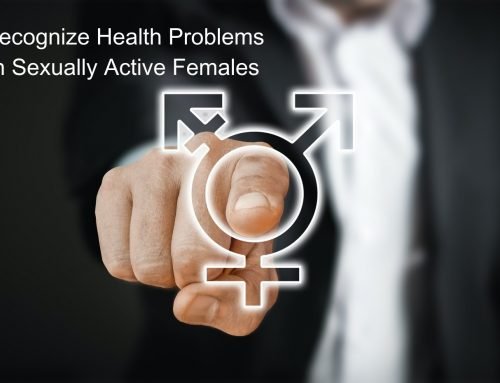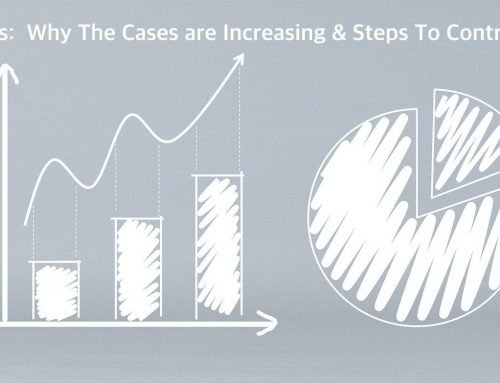Overview of HIV
Human immunodeficiency virus alternatively, also known as HIV, is a chronic infection that weakens a person’s immune system. As soon as a person is exposed to the virus, it is important to get treatment without any delay. If it is left untreated, it turns into AIDS or acquired immunodeficiency syndrome.
In AIDS, because of the virus, a person’s CD4 T cell count gets below 200, meaning their immune system is seriously compromised. At this stage, a person is at a much greater risk of being more susceptible to common infections like flu and can even die because of that.
For an HIV infected person to advance to the AIDS stage, it takes from a few weeks to even more than a decade. Going by the symptoms, it cannot be ascertained if a person is, in fact, HIV positive or has AIDS as some people do not exhibit any sort of signs. However, that does not mean they cannot spread it to someone else, as even without clearly showing signs, an HIV positive person is still capable of spreading it to others.
Cause of Spread
HIV is spread through coming in contact with the bodily fluids of an infected person, namely via having unprotected anal, oral, and vaginal sex, through the sharing of needles and syringes, blood transfusions, and from a mother to the fetus, during childbirth and breastfeeding. The only way it can be confirmed if a person indeed is HIV positive is to get a blood test done. If the result is positive, they are recommended with ART or Antiretroviral therapy. The therapy uses a combination of HIV medications in order to stop the virus from proliferating and thus keeping the symptoms in check.
Today with Antiretroviral therapy, even if a person gets HIV in their teens can normally live up to 60 years with no complications whatsoever. Let’s look at some of the statistics that shed light on what strata of people are mostly affected by it and what the global reports say in this regard.
Demographics: Who & How people get HIV?
As reported by the Centers for Disease Control and Prevention during a survey conducted in the United States, the year of 2016, 67 percent or 39782 of the total 50,000 individuals diagnosed with HIV were homosexual men. Out of these, 26,500 men got the virus solely through having sex with another male. In the same survey, out of 9500 heterosexuals, 2000 were men, while 7500 were women.
The survey also reported that 17500 Blacks had the virus while Latinos and Caucasians were 9,766 and 10,345, respectively. In terms of the age group, most of the people diagnosed were from 25 to 29 years, then came the age group from 20 to 24 years, and lastly, 30 to 34 years.
HIV Affecting Different Groups
HIV has been a constant problem for every country worldwide, including the United States. There has still not been a permanent cure for this epidemic aside for some treatments that help people with curbing its complications. When it comes to the United States of America by the end of 2016, there were 1.1 million people that were diagnosed with HIV, out of which 14% were not even aware that they were carrying the virus.
According to the New HIV Diagnoses in the USUS and Dependent Areas by Transmission Category, 2018, homosexual men constituted a whopping 69% of all new cases of HIV diagnoses in the same year while the heterosexuals accounted to a mere 24%.
In terms of ethnicity, African Americans or Blacks were the most affected ones. In the same year, 42% of all newly reported cases of HIV involved Black or African American adults and teens. The next race affected by HIV was the Latinos that accounted for 27% of the newly diagnosed HIV cases. In conclusion, the African American or Black gay or bisexual men were the most affected subpopulation in America by HIV.
Talking about age groups, those aged between 13-24 were the most affected. Out of all the new HIV cases in 2018, 21% constituted the youth. A staggering 83% of these young people were gay men.
Prevalence & Deaths: Then and Now
As of now, there are 1.1 million people in America that have the HIV virus. The number of newly diagnosed cases of HIV in America was 39,782 in the year 2016. About 18,160 people in the year 2016 had an advanced stage of HIV or AIDS.
As per the American Federation of AIDS Research, there were 250,000 cases of AIDS by the end of 1992, out of these 200,000 died because of its complications. By the year 2004, this number plummeted to almost 1 million people, out of which 500,000 people succumbed to death.
However, there has been about a 10 percent decrease in the number of new cases of HIV from the year 2010 to 2014. As a result of people being more aware of its treatments, there has been a significant decrease in the number of people contracting HIV. The HIV treatment ART or antiretroviral therapy helps in reducing the virus count in the body to almost undetectable levels. An HIV positive person with untraceable levels of the virus cannot transfer it to someone else even with unprotected sex.
Key Facts
- With almost 37.9 million diagnosed with HIV and millions of people dying because of AIDS, HIV is one of the biggest health-related challenges in the world today.
- With no permanent cure to this epidemic, a lot of people living with the virus or are in danger of contracting it does not have access to its treatment options and prevention care.
- Despite being a big challenge, due to collective global efforts, there has been a tremendous amount of progress made in recent years.
- The global community, with the efforts of Sustainable Development Goal 3, has made it a target to end this epidemic by the year 2030. According to the 90-90-90 target by UNAIDS, the global community has agreed to get rid of HIV by the year 2020.
- Through the President’s Emergency Plan for AIDS Relief, the United States of America government works to support global efforts in eradicating all HIV related problems. It is the largest donor to the Tuberculosis and Malaria Global Fund, along with the Global Fund to Fight AIDS.
Global Goals
In order to fight this epidemic, WHO created the Global Programme on AIDS in the year 1987, in which major international efforts began to control the spread of HIV. Even today, joint efforts, along with funding strategies, have greatly emboldened the global efforts to make people more aware of HIV; its causes and effects.
UNAIDS or The Joint United Nations Programme on HIV/AIDS came into being in the year 1996 with the main goal of kick-starting worldwide attention towards HIV and AIDS.
The Global Fund to Fight AIDS, Tuberculosis, and Malaria Global Fund came into being in the year 2001 by the United Nations General Assembly Special Session as a funding institution to help countries by granting them with the required funds in order to address the issues related to HIV, Malaria, and Tuberculosis.
Apart from these, there has been a lot of support coming in from the affected countries where they work towards building a world with no AIDS and HIV. SGDs or Sustainable Development Goals came into being in 2015, and under its SDG Goal 3, they work towards eradicating AIDS by the year 2030.
Outlook
UNAIDs “90-90-90” targets that were announced in 2014 on World AIDS Day are aimed at 90-90-90 targets set for the year 2020 with the aim of getting rid of AIDS by 2030. The targets take into account, ”90 percent of diagnosed with HIV and being aware of their status, 90 percent of individuals being aware of having HIV on treatment and 90 percent of individuals on HIV treatment with undetectable viral loads.” By the year 2018, 79 percent of people knew that they had HIV, out of which 78 percent took the help of treatment options, and about 86 percent of individuals had suppressed viral loads.
At the UNUN. General Assembly High-Level Meeting on Ending AIDS in the year 2016, global leaders came out with a brand new political declaration that was aimed at intensifying the current efforts to eradicate the HIV/ AIDS epidemic by the year 2030.
Reference Links
- Different groups getting affected by HIV: Reference from cdc.gov
- Prevalence and death: Reference from healthline.com
- Key facts and global goals: Reference from kff.org





Leave A Comment